Takeoff Construction: Step-by-Step Guide
Togal.AI
|
Material costs are rising and profit margins continue to thin. To avoid project delays and cost overruns, general contractors and estimators must ensure accurate takeoffs and estimations.
With skillful takeoffs, you can get clarity on all components required in a construction project. In this article, discover:
- What is a Takeoff in Construction?
- Takeoff Construction Methods
- How to Streamline the AI Takeoff Process
Keep reading to learn more.
Takeoff Construction Definition
What are Takeoffs in Construction?
Construction takeoffs have many names including blueprint takeoffs, takeoff estimating, quantity takeoffs, and material takeoffs.
It’s the process of counting and measuring items from drawings to quantify the materials required for the project. This is the first step to cost estimation and determines the following:
- Project Feasibility - Assessment of a construction project’s potential for success.
- Profit Estimation - Calculation of expected income, expenses, and financial viability.
- Material Purchasing - Buying needed materials for the project based on specifications and budgets.
Construction takeoff includes all materials that professionals need to complete a construction project, such as concrete, lumber, piping, windows, and steel.
Types of Takeoff Construction
Types of takeoff include lumber takeoff, concrete takeoff, electrical takeoff, plumbing takeoff, flooring takeoff, drywall takeoff, and roofing takeoff.
What is a Lumber Takeoff?
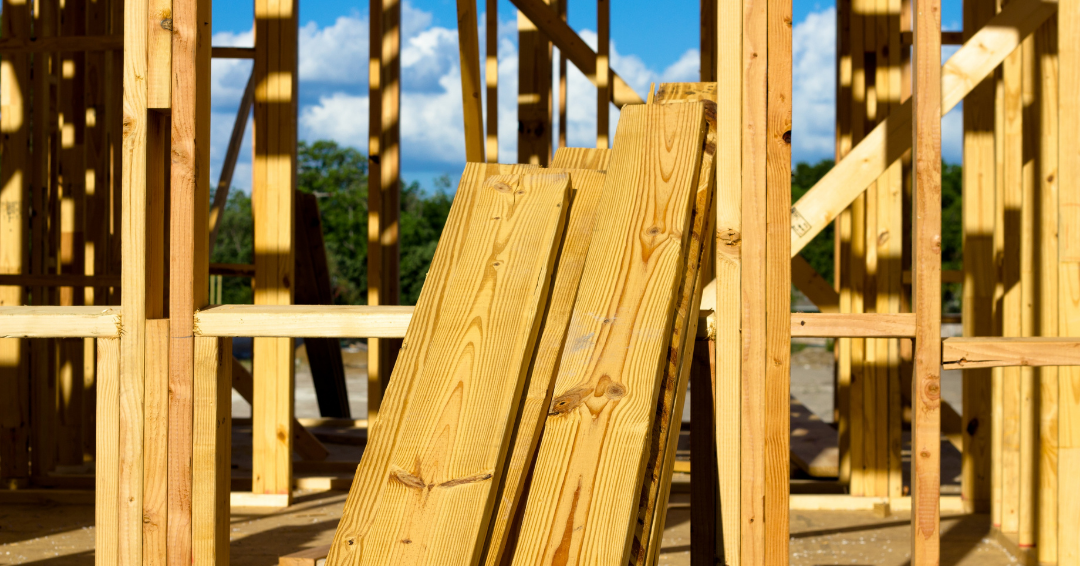
A lumber takeoff involves estimating the amount and type of wood needed for construction. To do this:
- Measure the dimensions of the structure.
- Identify the different parts of the frame e.g. studs, headers, joists, rafters, and plates.
- Calculate the quantity and cost of each part.
What is a Concrete Takeoff?

A concrete takeoff is the process of estimating the quantity and type of concrete needed to build your structure.
- Measure the area and thickness of the concrete slabs, footings, walls, columns, and beams.
- Determine the different grades and mixes of concrete required for each part of the structure.
- Calculate the volume and weight of each concrete type, along with the costs.
What is an Electrical Takeoff?

An electrical takeoff includes estimating the quantity of the different electrical materials and fixtures needed for the project.
- Review the electrical plans and specifications for the project.
- Identify the various components of the electrical system, such as wires, conduits, outlets, switches, lights, panels, breakers, transformers, etc.
- Calculate the length, quantity, size, and costs of each component.
What is a Plumbing Takeoff?

To do a plumbing takeoff, list down the types and quantity of plumbing materials and fixtures required for the construction project.
- Review the plumbing plans and specifications for the project.
- Identify the required parts of the plumbing system, such as pipes, fittings, valves, faucets, sinks, toilets, showers, tubs, water heaters, etc.
- For each part, measure thier length, quantity, size, and costs.
What is a Flooring Takeoff?

In a flooring takeoff, estimate the amount and type of flooring materials required for construction. To do this:
- Measure the area and shape of each room or space that requires flooring.
- Identify the different flooring materials required for each room or space, such as carpet, tile, hardwood, laminate, vinyl, etc.
- Calculate the square footage and quantity of each type of flooring material, along with the costs.
What is a Drywall Takeoff?

A drywall takeoff involves measuring the amount and type of drywall materials needed for construction. To do this:
- Measure the height and length of each wall and ceiling that requires drywall.
- Identify the different types and thicknesses of drywall sheets needed for each wall and ceiling, such as regular, fire-rated, moisture-resistant, soundproofing, etc.
- Determine the number and size of drywall sheets needed for each wall and ceiling, along with the costs.
What is a Roofing Takeoff?

A roofing takeoff involves estimating the amount and type of roofing materials needed for construction. To do this:
- Simply measure the area and slope of each roof section that requires roofing.
- Identify the different types and styles of roofing materials required for each roof section, such as shingles, tiles, metal panels, slate, etc.
- Calculate the number and size of roofing units needed for each roof section.
- Determine the cost of each type and size of roofing unit.
Construction Takeoff Examples
Here are sample takeoff documents and templates that demonstrate how to estimate material quantity and costs based on the project’s blueprints. These examples can serve as guides to contractors and estimators who are crafting their proposals, preparing for a bid, and planning their budgets.
Quantity Takeoff Sheet by QTO ESTIMATING
Download a takeoff sheet example complete with the list of materials needed, along with the breakdown of material quantity and total costs.


Download a complete version of QTO ESTIMATING’s quantity takeoff sheet here.
Construction Cost Estimate Template by QTO ESTIMATING
Estimate various types of construction projects and different trades. With this template, you can also input material quantity, labor cost, equipment cost, and total cost.
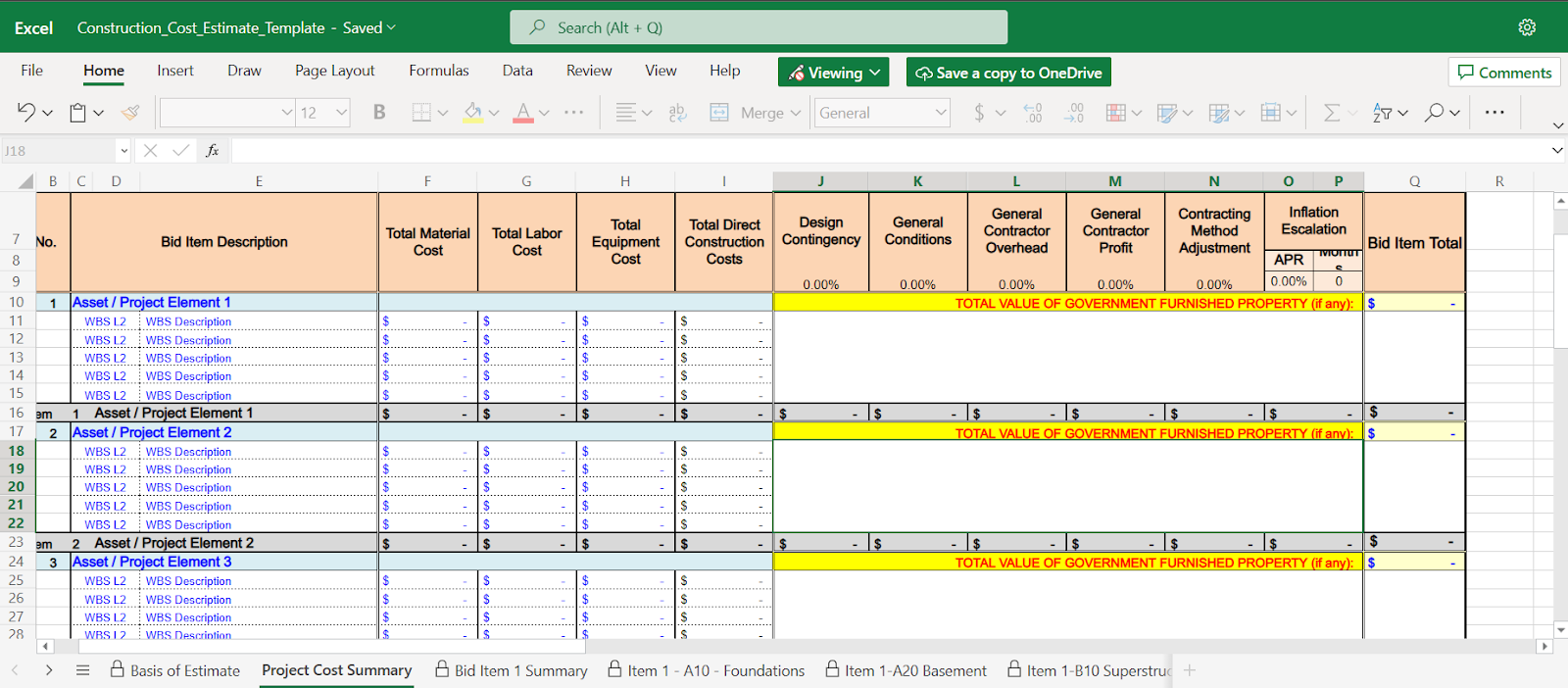
Download a complete version of QTO ESTIMATING’s construction cost estimate template here.
Construction Budget Template by Smartsheet
This template by Smartsheet can help you create a detailed project budget for both building and remodeling projects.
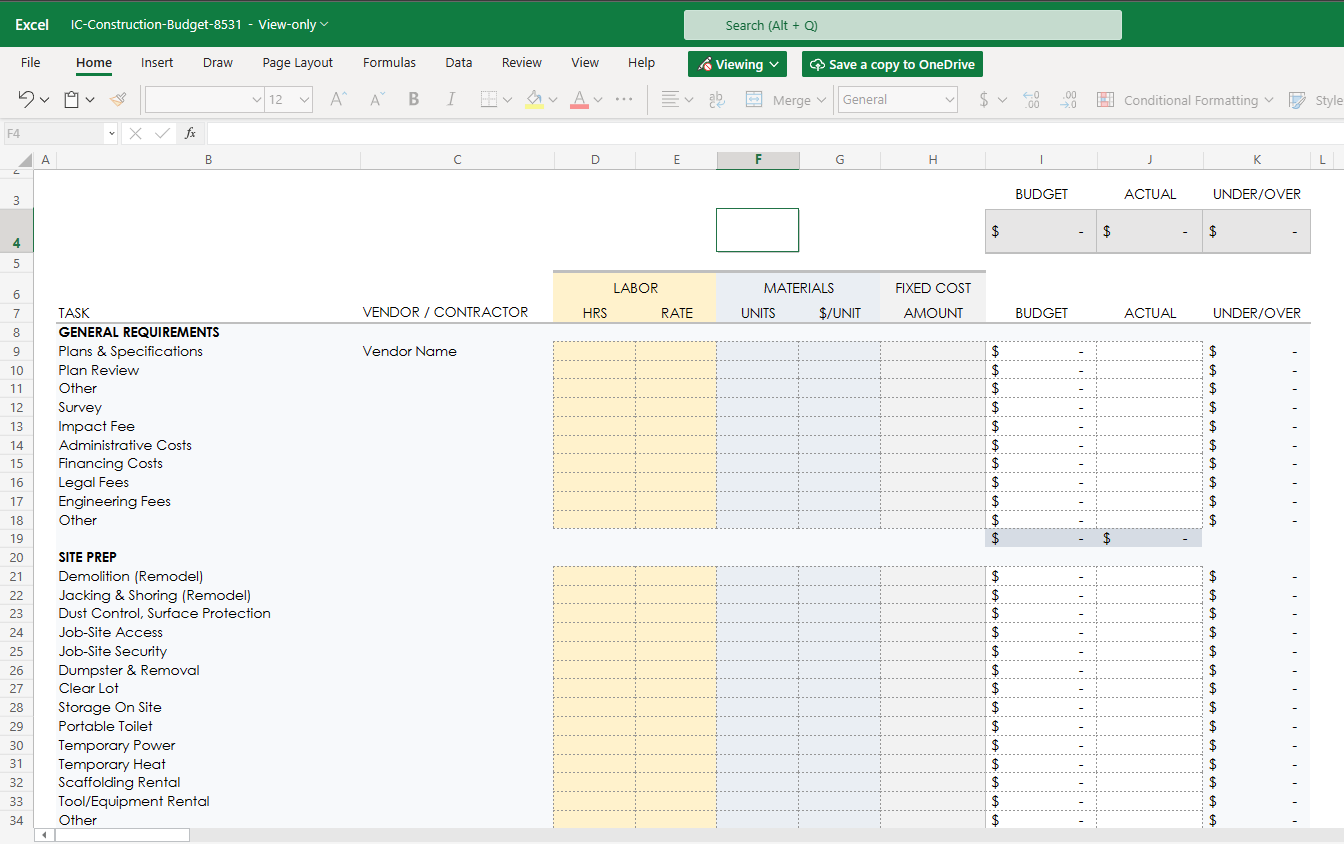
Download the spreadsheet here.
Takeoffs Construction: Process
Complete your construction takeoff and get an estimate of the material cost by following these five steps.
Step 1: Review the Project Plans
Get your hands on the project plans and documents provided by the project owner. These may include drawings, blueprints, specifications, sketches, and more. Review these documents and understand the scope of work, the design requirements, the dimensions and measurements, and any special instructions or notes.
Step 2: Count and List the Required Materials
As you view the project’s blueprint, start counting and listing the materials required for each trade or scope of work. For example, for electrical takeoffs, list and count the wires, conduits, outlets, switches, lights, panels, breakers, and transformers. Use a spreadsheet or a software program to categorize your list and assign codes or labels to each item.
Step 3: Measure the Construction Project's Components
After you have listed the materials, measure the various components of the project that impact the quantity of materials needed. For example, for flooring takeoffs, measure the area and shape of each room or space that requires flooring. You can measure the dimensions with a scale ruler, a measuring tape, a laser device, or estimating software and convert them to the appropriate units.
Step 4: Determine the Quantities
After measuring the various project components, determine the quantities of each material required. Leverage formulas, calculations, tables, charts, or software programs to do this. Account for factors such as overlap, waste, and shrinkage that may alter the number of materials needed.
Step 5: Calculate the Costs
Determine the costs of each material required. Use unit prices, labor rates, equipment rates, overhead costs, markups, and contingencies to calculate the cost of each item.
Utilize historical data, market research, supplier quotes, or estimating software to access accurate and updated cost information. Include any taxes and fees that may apply to your project.
Takeoff Construction Methods
Manual
This is a traditional method of doing takeoffs involving paper plans, a scale ruler, measuring tape, a calculator, and a paper or spreadsheet. The estimator must review the project plans meticulously, and manually count and list all materials needed for each trade.
Digital
This is the modern way of doing takeoffs involving a computer, a mouse and a software program. The estimator must import or scan the project plans into the software and use various tools to count and list the materials.
How to Streamline the Takeoff Construction Process
- Use Tools that Help Determine Cost
To determine the cost of a material component, here are some sources of reference.
- Invoices
Supplier invoices show the purchase price, discounts, delivery charges, and taxes of the material.
- Wholesale Price Indices
Using these indices, you can track changes in construction materials prices over time and across regions.
- Use Calculators
With a construction calculator, estimate materials and costs more efficiently and accurately. Simplify complex calculators, reduce human errors, and save time.
Here are some of the calculators that you can use.
Lumber Takeoff Calculator
Estimate the number of studs, top and bottom plates, and sheets of plywood required to build a stud-framed wall with this framing calculator. It also provides you with the board footage and wall square footage.

Concrete Calculator
Determine the amount of concrete needed for various projects such as slabs, walls, footings, columns, and curbs.
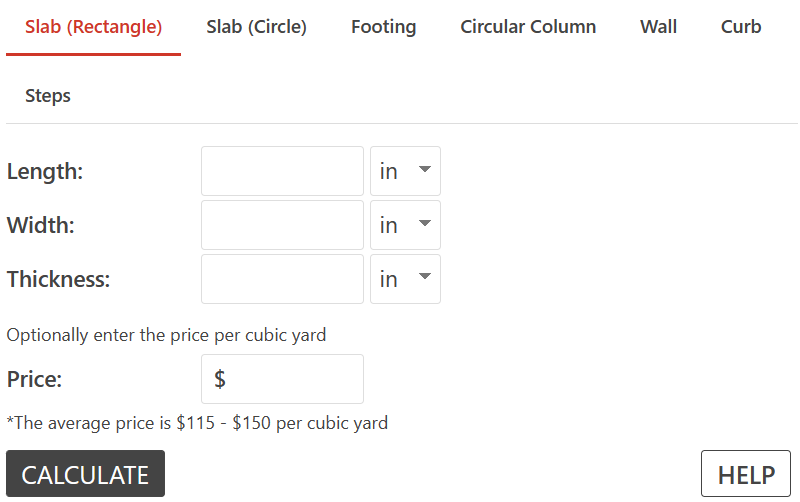
Plumbing Calculator
Get all the calculators you need to determine material costs for installing pipes, faucets, fixtures and water heaters. This compilation of plumbing calculators will help you calculate rolling offsets, flow rate, pipe volume, and more. The example below shows the rolling offsets calculator.
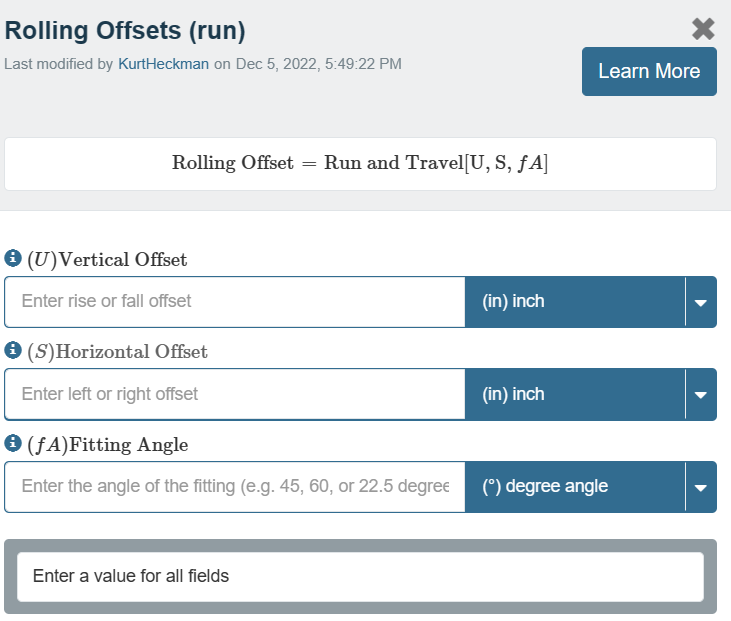
Flooring Calculator
Calculate how much flooring material you need and the cost to install it. Simply enter the width and length value, then click “calculate.”
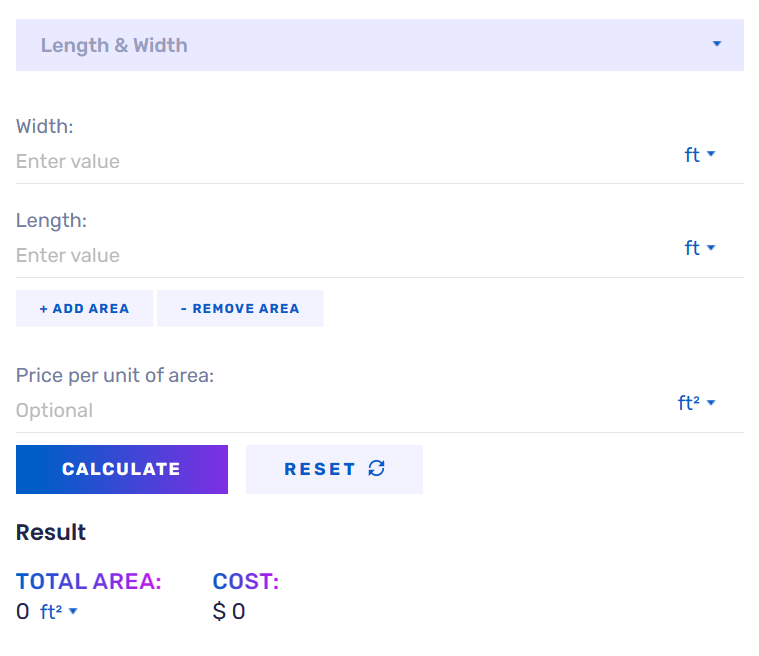
Drywall Calculator
Calculate the room surface area, the net room area, the number of panels, and the total cost by simply inputting the room dimensions, door and window sizes, ceiling option, and panel type.

Roofing Calculator
Access multiple roofing-related tools that are easy and intuitive to use. This includes roof area calculators, roof materials calculators, pitch calculators, and geometric shape calculators. The example below shows a basic roof area calculator.

3. Use AI Takeoff Software
Take advantage of the most advanced pre-construction technology in the industry, Togal.AI. This technology is a takeoff software backed by artificial intelligence and machine learning to automatically detect, measure, compare and label project spaces and features on architectural drawings.
The video below shows how equipping your estimators with Togal.AI can help speed up the takeoff process.
Here’s how AI takeoff software such as Togal.AI can streamline the takeoff process:
- Automatically detect and measure elements such as walls, doors, windows, rooms, symbols, and more from PDF or CAD drawings without manual clicking or tracing.
- Automatically label and classify the detected elements based on their geometry or textual description, saving time and reducing errors.
- Complete takeoffs in just under a minute, instead of weeks, with up to 98% accuracy.
- Analyze any drawing no matter the file type.
- Leverage cloud-based collaboration to simultaneously work with multiple team members on any device, anytime and anywhere, as long as there’s internet access.
Here’s why AI takeoff software can help you become more competitive against estimators and general contractors using manual and digital takeoffs not backed by AI:
- Manual takeoffs are tedious, time-consuming, and prone to human errors that can impact the quality and reliability of estimates.
- While digital takeoffs are faster than manual ones, they still require a lot of user input and intervention, which can limit the efficiency and scalability of the process.
On the other hand, AI takeoffs leverage machine learning algorithms that can learn from data and improve over time. This makes them more intelligent, adaptable, and reliable than manual or digital methods.
Speed Up the Takeoff Process with Togal.AI
Conduct fast and accurate takeoffs, as they’re the basis for an effective cost estimate and proposals that will help you close more construction projects. More importantly, they are necessary for pricing the job right, avoiding delays and cost overruns.
The takeoff process, however, varies depending on the type, whether it’s lumber takeoff, roofing takeoff, and more. The method and process used can also impact its speed and accuracy. For example, manual takeoffs can be more time-consuming and labor-intensive. On the other, digital takeoffs might be faster than manual takeoffs, but they still require a ton of user input that may impact efficiency.
To save time, reduce errors, and enhance collaboration among all parties involved in the takeoff process, leverage AI takeoff software. With this technology, process takeoffs in just under a minute, helping you shift focus towards value engineering.
Want to streamline your construction takeoff services? Explore how Togal.AI can streamline the takeoff construction process. Try Togal, book a custom demo, or get Togal.AI today.
